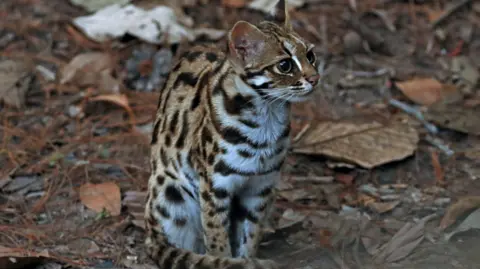Helen BriggsEnvironment Correspondent
 Getty Images
Getty ImagesIn true feline style, cats were slow to decide when and where to bond with humans.
The transition from wild hunter to pampered domestic animal occurred much later than previously thought – and in a different place, according to new scientific evidence.
A study of bones found at archaeological sites suggests that cats began their close relationship with humans only a few thousand years ago, in North Africa rather than the Levant.
“They're everywhere, we make TV programs about them and they dominate the Internet,” said Professor Greger Larson of the University of Oxford.
“The relationship we have with cats only began about 3.5 or 4,000 years ago, not 10,000 years ago.”
 Getty Images
Getty ImagesAll modern cats are descended from one species – the African wild cat.
How, where and when they lost their wildness and formed close ties with humans has long puzzled scientists.
To solve the mystery, researchers analyzed the DNA of cat bones found at archaeological sites in Europe, North Africa and Anatolia. They dated the bones, analyzed the DNA and compared it with the gene pool of modern cats.
New evidence shows that the domestication of cats did not begin in the early days of agriculture – in the Levant. Instead, it happened several thousand years later somewhere in North Africa.
“Rather than being in an area where people first started farming, it appears to be more of an Egyptian phenomenon,” Professor Larson said.
 Ziyi Li and Wenquan Fan
Ziyi Li and Wenquan FanThis fits with what we know of the land of the pharaohs as a society that revered cats, immortalized them in art, and preserved them as mummies.
Once cats became associated with people, they were moved around the world, where they were prized as ship's cats and pest controllers. Cats only appeared in Europe about 2,000 years ago, much later than previously thought.
They traveled through Europe and Great Britain with the Romans, and then began moving east along the Silk Road to China.
Today they are found in all parts of the world except Antarctica.
 Getty
GettyAnd here's what's new: Scientists have discovered that the wild cat had been interacting with people in China for some time, long before domestic cats appeared on the scene.
These rival kittens were leopard cats, small wild cats with leopard spots that lived in human settlements in China for about 3,500 years.
According to Professor Shu-Jin Luo of Peking University in Beijing, early human-leopard cat relationships were essentially “commensal” ones, with the two species living alongside each other without harm.
“Leopard cats benefited from living near humans while being largely unharmed by humans or even welcomed them as natural rodent controllers,” she said.
 Getty
GettyLeopard cats have not become domesticated cats and continue to live in the wild throughout Asia.
Interestingly, leopard cats were recently crossed with domestic cats to create Bengal cats, which were recognized as a new breed in the 1980s.
The study was published in the journal Science and in Cellular genomics.









